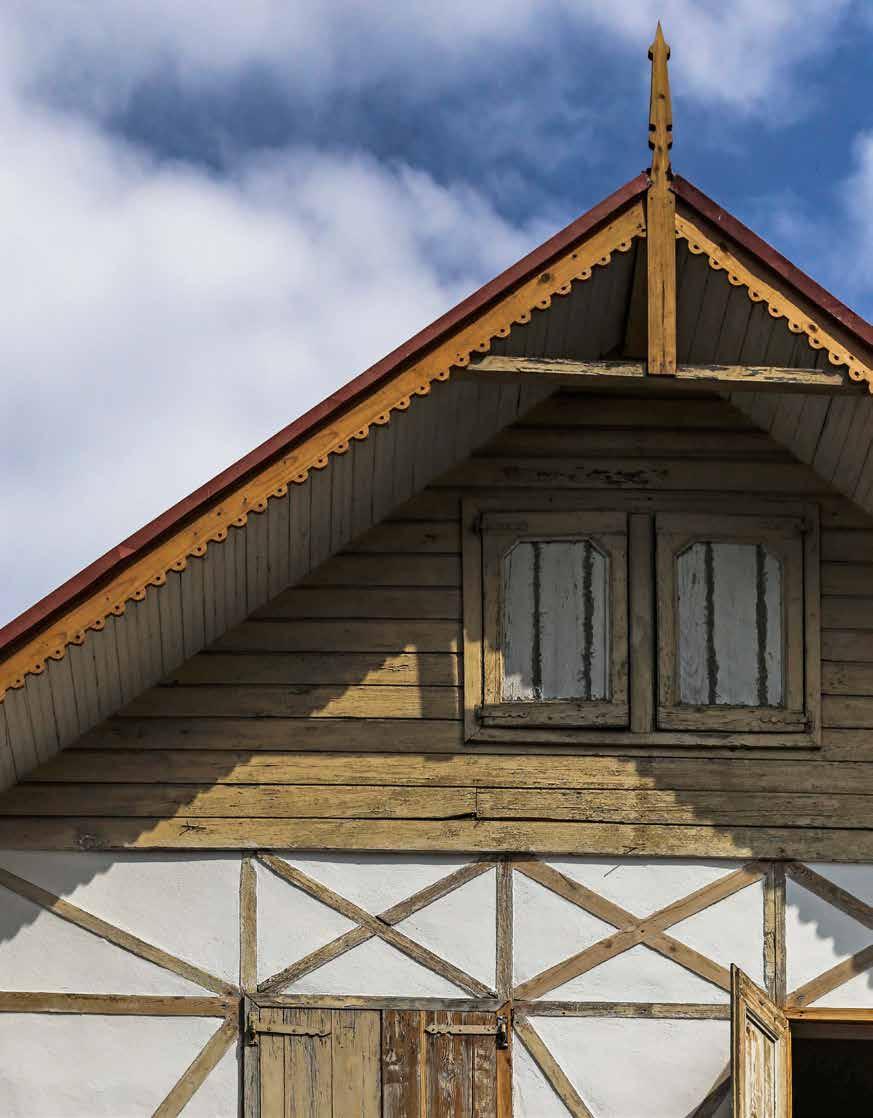
3 minute read
Next Steps
As this studio project was limited to a single semester, there are many opportunities for further study and action. The following ‘Next Steps’ have been identified for future studios, the client, student collaborators, and other interested parties to carry forward and to build on the preliminary findings and proposals presented in this report.
Mock-up version of a digital catalogue of the Gingerbread houses of Port-au-Prince. From the data collected in this studio, a digital catalog can be created to document the Gingerbread houses that have been lost, preserve their designs and histories, and provide the historical context of their construction. Information from the survey, analyses, and further data collection can be added and shared online, providing resources for future restoration and monitoring projects. The continued monitoring of the Gingerbread houses is another important next step. Recognizing that at least fifty-nine Gingerbreads have been lost since 2010, that many continue to be under threat of demolition or collapse, and all are subject to physical and functional alterations, a systematic monitoring program can inform a longitudinal assessment of the changing conditions of the Gingerbread houses within their urban context.



As the studio was limited in the scope of data it collected, it would be interesting and beneficial to enhance the dataset with information on ownership and demographics. During the studio’s fieldwork, some team members were able to talk to a number of the owners of Gingerbread houses, and it was found that their stories were extremely valuable in understanding the properties’ characteristics and the challenges and opportunities surrounding their preservation. It is thus proposed that gathering more information about the owners of Gingerbreads, both qualitative and quantitative (e.g. census-style data), would enable better targeting of proposals and more robust evaluations of their feasibility. Any ownership and demographic data should be collected into a database that can mirror or integrate the data collected during this study, thus enriching the understanding of the Gingerbread houses and their future.
Currently, the data that was collected in the studio is limited to ArcGIS, and as such, is not readily available to a wider audience. In order to make the data as accessible as possible to colleagues in Haiti as well as other interested parties, sharing the findings of this studio through an open source platform is desirable, and can then serve as a database for future studies and collective action.
For the client, a key next step would be to test and localize select proposals featured in this report. FOKAL can begin to reach out to local residents, students, architects, and artists to test proposals in pilot areas. Active feedback from these pilot tests can help to refine the proposals for wider implementation. While it is difficult under unstable and highly changeable governments, under the right conditions FOKAL has the stature to lobby the local and national governments to adopt preservation policies regarding the Gingerbreads. By joining forces with government actors and sharing knowledge and resources, FOKAL can help to integrate the implementation of this studio’s proposals with urban improvement projects that may be initiated at the municipal level.
Community outreach through charrettes, workshops, and other forms of stakeholder engagement will serve as important arenas within which the needs, desires, and motivations of the Gingerbread homeowners as well as other residents in the study area may be discussed and understood. An owners group can also be formed to serve as a network of resources, information, and funds, to encourage dialogue on the preservation of these heritage buildings and the means
to carry this out. Finally, FOKAL can direct financial resources toward funding future studies about the Gingerbread houses and neighborhoods, and continue its collaboration with universities. Student collaborators can participate by assisting FOKAL in the pilot projects, joining the survey efforts, and raising awareness through continued study, publication, project initiation, and community engagement.
Next steps might include reaching homeowners and business owners of Gingerbread houses.

These are just a few of many potential opportunities to build on the data, findings, and proposals that this studio has generated. A process of continued exposure, exchange of ideas, and sharing of resources—locally and internationally—can effectively serve to increase the awareness, understanding, and valorization of the Gingerbread houses, and the role that this heritage can play in enriching urban life.







